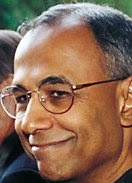Organizations sense and respond to their environments
Living things thrive if they sense what is going on in their environments and respond effectively. A bacterium that doesn't sense the presence of food in its vicinity will perish. A zebra that runs away frequently from non-threats will die of exhaustion, and one that doesn't run away from a real threat will die too. Effective sense and response are characteristic of successful organisms and organizations. Smart systems, for the purposes of these notes, are systems integrated with information technologies that help us sense and respond better.
Collective sense and response
Organizations sense and respond collectively. Lions in a pride signal each other and respond collaboratively when they hunt. People in companies collaborate to deal with unexpected events such as sudden changes in revenue. Countries deal with crises such as hurricanes by harnessing capabilities of local governments, corporations, charities and individuals. Smart systems help groups to sense and respond cooperatively.
Roles of Sympathetic and Parasympathetic Nervous Systems in Sense and Response
Mammals, including humans, sense and respond by using the sympathetic and parasympathetic nervous systems. The sympathetic nervous system mediates the "fight or flight" response. When an animal senses prey or aggressors, its sympathetic nervous system triggers intense responses. By contrast, the parasympathetic nervous system helps manage ongoing functions such as digestion - for example, it senses food in the mouth and controls secretion of salivary glands. The sympathetic and parasympathetic nervous systems are complementary; animals need all their resources to fight or fly as the need arises, and they must also control routine activity. Smart systems improve an organization's sympathetic and parasympathetic nervous systems; they are used to sense and respond to both unusual situations and routine activities. For example, RFID (radio frequency ID) tags on bags helps routine transfer of bags to and from planes in airports, but baggage-handling systems also help isolate dangerous cargo.
Sense and respond anywhere, anytime, with anybody, in fractions of a second
When our ancestors hunted millennia ago their hunting parties sensed and responded to threats and opportunities. They saw as far as the eye can see. Today systems allow us to sense activity deep in the oceans and far out into space. Our ancestors threw spears as far as their muscles would let them. Today our responses reach across the globe: traders in London respond to conditions in Shanghai to buy stock on the New York stock exchange. Our ancestors hunted during the day while they could see. Today we work or play around the clock. We sense and respond to our environments just as our prehistoric ancestors did; however, information systems have amplified our sense and response capability many thousand fold - we sense and respond anywhere on the planet, at any time, with anybody, with greater accuracy, and in seconds.
The next two decades will see development of technologies that continue amplify our abilities to sense and respond dramatically.

No comments:
Post a Comment